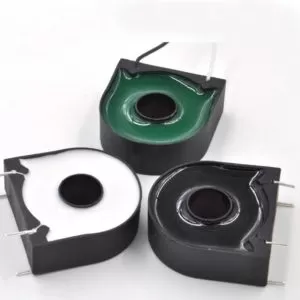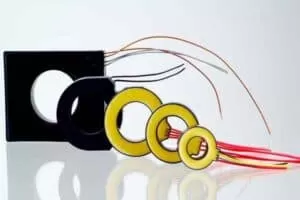If the current transformer is cut off at a large current, or the secondary winding is accidentally opened during operation, and after a test with a DC current, residual magnetism may occur in the core of the transformer, which will reduce the magnetic permeability of the core. Affects the performance of the transformer; therefore, before the current transformer performs an error test, the transformer should generally be demagnetized to eliminate the effect of residual magnetism on the error.
Here are two ways to demagnetize:
1. Open circuit (strong magnetic field) demagnetization: the primary and secondary windings are all open circuit, and the power frequency current is passed in the primary or secondary winding, which increases from zero to 20% or 50% of the rated current, and then decreases uniformly and slowly To zero. Repeat this process 2-3 times, while decreasing the current to 50%,20%,and 10% of the rated current each time. Before the demagnetization is completed, the secondary winding should be shorted before the current is cut off.
2. Closed circuit (heavy load) demagnetization method: Connect the secondary winding with a resistance equivalent to 10-20 times the rated load, and pass the power frequency current to the primary winding to increase from zero to 20% or 50% of the rated current, and then uniform And slowly dropped to zero. Repeat this process 2-3 times, at the same time make the current flowing in each time decrease by 50%, 20%, 10% of the rated current.
If it is a multi-secondary current transformer, the non-demagnetized secondary windings should be shorted during the demagnetization process.
For laminated cores, the magnetic permeability is generally reduced by about half, so the strength of the demagnetizing magnetic field should be doubled.
The accuracy level of current transformers for measurement ranges from 1 to 0.01, and their types and structures are very different. Therefore, the above two demagnetization methods and prescribed demagnetization parameters are not suitable for all current transformers.
Generally speaking, open-circuit demagnetization has a strong magnetic field and the core is saturated; while closed-circuit demagnetization has a weak magnetic field and the core is not very saturated. For precision current transformers, open circuit demagnetizing cores have a high magnetic density, high voltage amplitude, high winding open circuit voltage, and it is easy to damage the insulation and compensation components of the windings; using closed circuit demagnetization, the magnetic density is low and may not be achieved. The purpose of demagnetization, but it is relatively safe for the transformer, so in the past, precision current transformers were mostly closed-circuit demagnetized. Some transformer calibration devices are also specially equipped with demagnetization lines. When demagnetizing, a large load of 10Ωresistor is connected.
In fact, demagnetizing the current transformer is to pass the core through AC excitation to make the magnetic core’s magnetic density and permeability from low to high, go beyond the large magnetic permeability, and reach a saturated state, and then gradually reduce the magnetic field to zero. The magnetic density of the iron core is lowered to restore the magnetic permeability of the iron core.

The Cost Factors Behind Rogowski Coils: An Insightful Exploration
The Cost Factors Behind Rogowski Coils: An Insightful Exploration Why Rogowski Coils Are Worth the Investment Despite the simplicity of their design and the relatively inexpensive materials involved, Rogowski coils often come with a higher price tag. This can be attributed to several critical factors, from specialized manufacturing processes to





